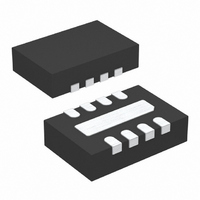LTC4068XEDD-4.2 Linear Technology, LTC4068XEDD-4.2 Datasheet - Page 9

LTC4068XEDD-4.2
Manufacturer Part Number
LTC4068XEDD-4.2
Description
IC CHARGER BATT LI-ON 8-DFN
Manufacturer
Linear Technology
Type
Battery Chargerr
Datasheet
1.LTC4068EDD-4.2PBF.pdf
(12 pages)
Specifications of LTC4068XEDD-4.2
Function
Charge Management
Battery Type
Lithium-Ion (Li-Ion)
Voltage - Supply
4.25 V ~ 6.5 V
Operating Temperature
-40°C ~ 85°C
Mounting Type
Surface Mount
Package / Case
8-WFDFN Exposed Pad
Output Current
950mA
Output Voltage
4.2V
Operating Supply Voltage (min)
4.25V
Operating Supply Voltage (max)
6.5V
Operating Temp Range
-40C to 85C
Package Type
DFN
Mounting
Surface Mount
Pin Count
8
Operating Temperature Classification
Industrial
Lead Free Status / RoHS Status
Contains lead / RoHS non-compliant
Lead Free Status / RoHS Status
Contains lead / RoHS non-compliant
Available stocks
Company
Part Number
Manufacturer
Quantity
Price
Company:
Part Number:
LTC4068XEDD-4.2
Manufacturer:
LT
Quantity:
10 000
Part Number:
LTC4068XEDD-4.2
Manufacturer:
LINEAR/凌特
Quantity:
20 000
Company:
Part Number:
LTC4068XEDD-4.2#PBF
Manufacturer:
LINEAR
Quantity:
116
Part Number:
LTC4068XEDD-4.2#PBF
Manufacturer:
LT/凌特
Quantity:
20 000
Company:
Part Number:
LTC4068XEDD-4.2#TRPBF
Manufacturer:
LT
Quantity:
7 480
APPLICATIO S I FOR ATIO
Stability Considerations
The constant-voltage mode feedback loop is stable with-
out an output capacitor, provided a battery is connected to
the charger output. With no battery present, an output
capacitor on the BAT pin is recommended to reduce ripple
voltage. When using high value, low ESR ceramic capaci-
tors, it is recommended to add a 1Ω resistor in series with
the capacitor. No series resistor is needed if tantalum
capacitors are used.
In constant-current mode, the PROG pin is in the feedback
loop, not the battery. The constant-current mode stability
is affected by the impedance at the PROG pin. With no
additional capacitance on the PROG pin, the charger is
stable with program resistor values as high as 20k; how-
ever, additional capacitance on this node reduces the
maximum allowed program resistor. The pole frequency
at the PROG pin should be kept above 100kHz. Therefore,
if the PROG pin is loaded with a capacitance, C
following equation can be used to calculate the maximum
resistance value for R
Average, rather than instantaneous charge current may be
of interest to the user. For example, if a switching power
supply operating in low current mode is connected in
parallel with the battery, the average current being pulled
out of the BAT pin is typically of more interest than the
instantaneous current pulses. In such a case, a simple RC
charged condition and eliminates the need for periodic
charge cycle initiations. The CHRG output enters a pull-
down state during recharge cycles.
If the battery is removed from the charger, a sawtooth
waveform of approximately 100mV appears at the charger
output. This is caused by the repeated cycling between
termination and recharge events. This cycling results in
pulsing at the CHRG output; an LED connected to this pin
will exhibit a blinking pattern, indicating to the user that a
battery is not present. The frequency of the sawtooth is
dependent on the amount of output capacitance.
R
PROG
≤
2
π
•
10
U
5
1
PROG
•
C
PROG
U
:
W
U
PROG
, the
filter can be used on the PROG pin to measure the average
battery current, as shown in Figure 2. A 10k resistor has
been added between the PROG pin and the filter capacitor
to ensure stability.
Power Dissipation
It is not necessary to design for worst-case power dissi-
pation scenarios because the LTC4068 automatically
reduces the charge current during high power conditions.
The conditions that cause the LTC4068 to reduce charge
current through thermal feedback can be approximated
by considering the power dissipated in the IC. Nearly all
of this power dissipation is generated by the internal
MOSFET—this is calculated to be approximately:
where P
voltage, V
current. The approximate ambient temperature at which
the thermal feedback begins to protect the IC is:
Example: An LTC4068 operating from a 5V supply is
programmed to supply 800mA full-scale current to a
discharged Li-Ion battery with a voltage of 3.3V. Assuming
θ
temperature at which the LTC4068 will begin to reduce the
charge current is approximately:
JA
Figure 2. Isolating Capacitive Load on PROG Pin and Filtering
P
T
T
T
T
T
A
A
is 50°C/W (see Thermal Considerations), the ambient
A
A
A
D
= 120°C – P
= 120°C – (V
= 120°C – (5V – 3.3V) • (800mA) • 50°C/W
= 120°C – 1.36W • 50°C/W = 120°C – 68°C
= 52°C
= (V
LTC4068-4.2/LTC4068X-4.2
D
LTC4068-4.2
is the power dissipated, V
BAT
CC
GND
– V
is the battery voltage and I
PROG
BAT
D
CC
θ
) • I
JA
– V
R
BAT
PROG
BAT
10k
) • I
406842 F02
BAT
C
FILTER
CC
• θ
is the input supply
JA
BAT
CHARGE
CURRENT
MONITOR
CIRCUITRY
is the charge
406842fa
9













